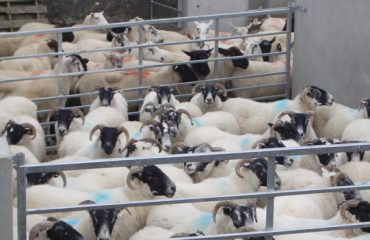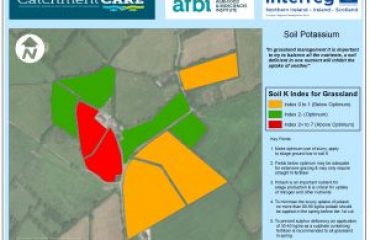
As instream/riparian works are beginning to take place in all three catchments, it may be useful to highlight some of the measures being implemented.
A challenge with river restoration and water quality improvement projects can often be that different areas require differing solutions and there is no ‘one size fits all’. However, a key method for improving rivers is to remove the pressures where possible. A number of pressures can be removed or reduced by installing fencing along the watercourse in areas of agricultural land use. Passive restoration is a method that concentrates on eliminating harmful land management practices within a catchment and allowing the natural healing process to take place. Many rivers will recover if left alone, restoring natural channel dynamics.
Fencing out grazing animals provides significant improvements in riparian vegetation, bank stability and overall channel conditions and hydromorphology at a low cost. Natural recovery can be assisted by planting or reintroducing native flora. Fencing that completely excludes livestock eliminates the introduction of nutrients and pathogens from animals and allows for riparian vegetation to colonise free of grazing pressures.
In an Irish context, agriculture and waste water have been identified as substantial contributors of excess nutrients to watercourses. Buffer strips of riparian vegetation are one way to reduce this problem. Options include fencing an area and allowing the vegetation to re-establish or alternatively fencing an area and planting native species. Benefits include:
- Fencing prevents livestock from entering water courses, thereby removing their impact on pollution from bank erosion and sedimentation or directly depositing manure in the watercourse.
- Fencing allows a range of vegetation types to establish naturally. Relative to its extent in the landscape, riparian vegetation has the capacity to generate a high return on ecosystem services.
- The riparian corridor will intercept nutrient and sediment run off from agricultural land. Excess sediments and nutrients can impact habitats and reduce oxygen levels in water.
- Riparian vegetation increases shade which reduces water temperatures. This will allow a more stable water temperature range in an era of climate change impacts.
- Riparian vegetation stabilises river banks with tree root systems. This reduces excess sediment from bank erosion and creates natural habitat for plant and animal species.
- Trees can encroach into the river forming diverse habitat features and contributing woody habitat and leaf litter to the river.
- The canopy provides “cover” for resident brown trout. It also creates a wildlife corridor which can be used by birds, bats and insects among other species.
- Riparian zones can help reduce peak flows in certain watercourses by slowing the water velocities further up the catchment.
Sites will be monitored to assess improvements made to the watercourse (Figure 1). Monitoring may include fish, invertebrate, habitat data and drone data imagery (Figure 2).



